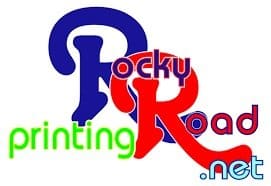Why Vectorized and Digitized Print-Ready Artwork is Critical for Professional Printing
Why Vectorized and Digitized Print-Ready Artwork is Critical for Professional Printing
In the world of professional printing—whether it’s screen printing, embroidery, digital printing, or wide-format signage—print-ready artwork is the foundation of quality results. If you’ve ever been told that your logo needs to be “vectorized” or “digitized,” or wondered why there’s an additional art fee for your order, you’re not alone. But there’s a good reason for it.
At the heart of it, vectorized and digitized artwork ensures precision, clarity, and compatibility across every stage of the printing process. In this blog post, we’ll break down why print-ready artwork is essential, what it really means to have vectorized or digitized art, and why reputable print shops charge for this service.
What Does “Print-Ready Artwork” Mean?
“Print-ready” means your artwork is in a format and quality suitable for accurate reproduction on the final printed product. This includes:
-
Proper file type (such as AI, EPS, PDF, or high-res PNG for digital prints)
-
Correct color mode (CMYK or spot color for printing)
-
Exact sizing and scale
-
Outlined fonts or embedded images
-
Clean, scalable vector lines or proper digitized stitch paths
Print-ready files eliminate guesswork, reduce delays, and ensure your brand looks as professional in print as it does on screen.
The Importance of Vectorized Artwork
Vector files use mathematical paths to represent shapes, allowing your artwork to be scaled infinitely without losing quality. Common vector file formats include:
-
AI (Adobe Illustrator)
-
EPS (Encapsulated PostScript)
-
SVG (Scalable Vector Graphics)
-
PDF (Portable Document Format—vector-compatible if saved properly)
Why Vector Files Matter in Printing:
-
Scalability: Your logo can be printed as small as a pen imprint or as large as a billboard with no loss of clarity.
-
Clean Edges: Unlike pixel-based (raster) images, vectors print with crisp lines, essential for high-quality output.
-
Color Separation: For screen printing, vector files allow printers to easily separate colors and create screens.
-
Editable Components: Vectors can be easily modified to change colors, adjust sizing, or tweak elements without starting from scratch.
Common Issues Without Vector Files:
-
Blurry or pixelated prints
-
Inability to separate colors for screen printing
-
Difficulties aligning layers or scaling correctly
-
Extra time spent manually recreating the artwork
The Role of Digitizing in Embroidery
Digitizing is a different but equally critical process—specific to embroidery. It involves converting artwork into a file that embroidery machines can read, mapping out every stitch, direction, and thread change.
Key Benefits of Digitized Art for Embroidery:
-
Machine Compatibility: Formats like DST, PES, EXP, and EMB tell embroidery machines exactly how to sew the design.
-
Clean, Consistent Results: Proper digitizing ensures thread tension, stitch density, and stitch types are optimized for the fabric.
-
Professional Look: Poorly digitized art leads to puckering, thread breaks, or unreadable text.
Digitizing is both an art and a technical skill, requiring experience and specialized software. No, you can’t just “upload a PNG”—it has to be converted thoughtfully for embroidery.
Why Printing Companies Charge for Art Services
Creating or converting artwork into a print-ready format takes time, skill, and professional design software. Here’s why this service often incurs a fee:
-
Labor-Intensive Process: Designers may need to rebuild logos from scratch if only a low-resolution image is provided.
-
Ensuring Consistency: Good art services ensure your brand colors, fonts, and proportions are accurate.
-
Reducing Errors: Print-ready art reduces costly mistakes in production.
-
Tailored Output: Artwork often needs specific adjustments based on the print method (e.g., screen printing vs. embroidery vs. digital printing).
Think of it as prepping your design for the red carpet—everything needs to be perfectly in place.
Investing in Print-Ready Art = Investing in Professional Results
Whether you’re printing custom t-shirts for a brand, embroidered polos for your staff, or promotional signage for an event, your artwork is the face of your company. Don’t settle for low-quality prints caused by poor files.
Professional printers care deeply about the final result, which is why they emphasize the importance of vectorized and digitized artwork. When done right, your design translates flawlessly from screen to product—and looks sharp, professional, and true to your brand.
Final Thoughts
If your printing partner asks for vector files or recommends digitizing services, they’re not trying to upsell—they’re trying to protect your investment. Print-ready artwork is the starting point for quality production, and art fees are there to cover the time and expertise required to get it right.
Pro Tip: Ask your print shop if you’ll receive the final vector or digitized files. These can often be reused in future projects, saving you time and money down the road.
Need help turning your logo into a print-ready file? Reach out to our design team today—we’ll make sure your brand shines on every product!

